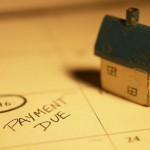Housing Bubble: Were Borrowers to Blame?
 During the subprime boom, a lot of people got loans they should not have gotten. While it's easy to condemn exploitive lenders, how much should we blame the borrowers?
During the subprime boom, a lot of people got loans they should not have gotten. While it's easy to condemn exploitive lenders, how much should we blame the borrowers?
Let’s face it: You won’t read every page of the Financial Crisis Inquiry Commission report. But FrumForum will, over the next days. So let’s proceed together, page by page, identifying the key points.
Click here to read the entire series.
How much should we blame the borrowers?
During the subprime boom, a lot of people got loans they should not have gotten. The longer-term consequences for these borrowers were usually negative, but in the short term - hey, money is money.
It's easy to condemn exploitive lenders. (And of course there were exploitive lenders: as the FCIC report notes on p. 14: during the boom, 10,500 people with criminal records took jobs in Florida as mortgage brokers; at least 4,065 of whom had records of financial crimes like fraud, racketeering and extortion.)
But still: don't borrow what you cannot pay back is not only a rule of prudence, it's also a moral rule. What should we think of those people who violated it, especially those who defaulted before making even a single payment? Surely they should have foreseen their trouble?
The majority FCIC report invites us to consider: maybe more than a few of those borrowers were just too incompetent to make rational decisions about increasingly complex financial products. From page 90:
In theory, borrowers are the first defense against abusive lending. By shopping around, they should realize, for example, if a broker is trying to sell them a higher- priced loan or to place them in a subprime loan when they would qualify for a less- expensive prime loan. But many borrowers do not understand the most basic aspects of their mortgage. A study by two Federal Reserve economists estimated at least 38% of borrowers with adjustable-rate mortgages did not understand how much their interest rates could reset at one time, and more than half underestimated how high their rates could reach over the years. The same lack of awareness extended to other terms of the loan—for example, the level of documentation provided to the lender. “Most borrowers didn’t even realize that they were getting a no-doc loan,” said Michael Calhoun, president of the Center for Responsible Lending. “They’d come in with their W-2 and end up with a no-doc loan simply because the broker was getting paid more and the lender was getting paid more and there was extra yield left over for Wall Street because the loan carried a higher interest rate.”
And borrowers with less access to credit are particularly ill equipped to challenge the more experienced person across the desk. “While many [consumers] believe they are pretty good at dealing with day-to-day financial matters, in actuality they engage in financial behaviors that generate expenses and fees: overdrawing checking accounts, making late credit card payments, or exceeding limits on credit card charges,” Annamaria Lusardi, a professor of economics at Dartmouth College, told the FCIC. “Comparing terms of financial contracts and shopping around before making financial decisions are not at all common among the population.”
Since the 1960s, right and left have agreed: government paternalism is utterly unacceptable.
The right does not want government setting limits on business to protect consumers from themselves. The left dislikes the insinuation that poorer people are less capable than richer people. And so we get sub-prime lending without limit.
New Deal financial regulation was frankly paternalistic. It assumed many people would make bad choices, and so it sought to narrow or remove financial choice. Is the Financial Crisis Commission pointing us back in that direction?
Tweet